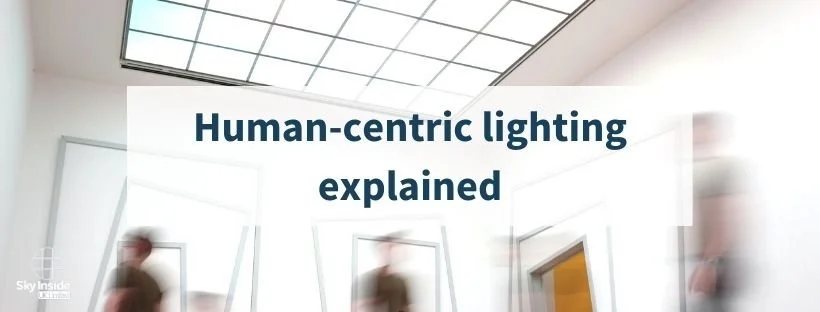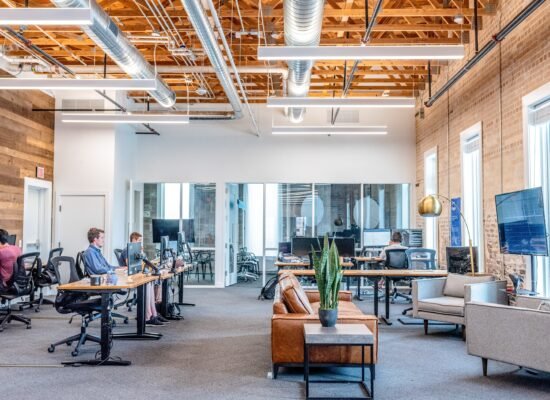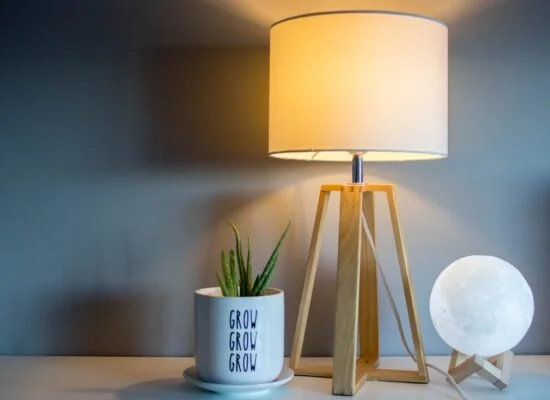Human-Centric Lighting Explained
Humans have always relied on natural sources of light to navigate the world. Artificial light was designed to improve the way we live, by creating on-demand illumination and helping us see in dark places.
But with developing technologies and the time we spend indoors growing, artificial light needs to do more than just brightening a dark room. This is where human-centric lighting comes in.
What Is Human-Centric Lighting?
Human-centric lighting (HCL) is artificial lighting that has been designed around a person’s needs. Such as a bright light that helps an office worker see well, feel energised and work productively.
HCL varies for different people and spaces. The overall aim is to be the most optimal source of light. It can provide health and productivity benefits by taking our circadian rhythms into account, and it can also have a low impact on the planet.
Circadian Rhythms
In the daytime, we need sunlight exposure to aid healthy sleep. This is a natural process experienced not just by humans, but many other species. Better known as the circadian rhythm, it helps us control our 24-hour daily schedules of sleep and wakefulness.
Bright daylight helps us feel awake and energised. In the evening, we need low levels of lighting so we can wind down. This is a mimicry of the sun’s daily cycle, which lets our bodies know that it’s the middle of the day or nearly time to sleep.
Poor artificial lighting can disrupt our circadian rhythms. If we’re exposed to bright light just before going to bed – be it via a regular lamp, tv or a mobile phone – our brains are tricked into believing that it’s not time for bed yet. Our bodies won’t sufficiently prepare to sleep, and we won’t have the full night’s rest we require to recharge.
How Does Human-Centric Lighting Work?
Human-centric lighting takes into account all the different ways light affects people. It’s meticulously designed to provide the right brightness at the right time. With intelligent control systems, it adapts and responds to specific environments.
HCL can feature varying colour temperatures and brightness levels to emulate the day-night cycle, which assists our circadian rhythms. Intense and cold blue-white lights are useful during the day to stimulate us. Low-intense and warm amber lights are better in the evenings when we need to wind down.
Through HCL, we can provide lighting that benefits both a person’s wellbeing and their productivity within an interior space.
Better For The Planet
HCL can also be a more sustainable source of light. Where high-intensity lighting is only needed at certain times of the day, less power is needed overall. Energy-efficient components are used within the design and construction of HCL, saving energy and helping reduce carbon footprints.
Human-Centric Lighting In Healthcare
Many healthcare environments can easily disrupt the circadian rhythm. Bright lights in hospitals often keep patients up at night. Poorly-lit wards disrupt their internal clocks, stopping them from getting the rest they need.
HCL in hospitals can help patients maintain regular sleep-wake cycles. Patients are then able to rest better, have more natural sleep patterns and be helped towards quicker recovery. Lighting can emulate the day-night cycle of the world outside, which is especially useful in rooms that have little access to natural light.
Human-Centric Lighting In The Workplace
Those who work indoors with poor light often feel low and lacking in energy. Numerous studies have shown that we need comfortable environments to help us be productive.
HCL can be implemented in offices, factories and many other places of work. It can energise workers, helping them feel positive and motivated. When workers are more productive, the company sees better results.
Sky Inside UK’s Human-Centric Lighting
Our lighting products are geared towards human needs and circadian rhythms. They also display beautiful natural imagery to encourage the body and mind to relax.
Living Skies bring many health and wellbeing benefits. They provide the right light at the right time and add depth to small or dark rooms. They benefit a wide range of environments such as schools, hospitals and workplaces.
For healthcare, in particular, Living Skies can be adjusted per patient. They’re especially beneficial for those suffering from delirium and brain trauma, or in long-term care.
Our HCL products also include ambient mood lighting. This is a colour-changing feature that offers distraction and is particularly popular with children. Mood lighting can fill the room with relaxing and healing colours.



